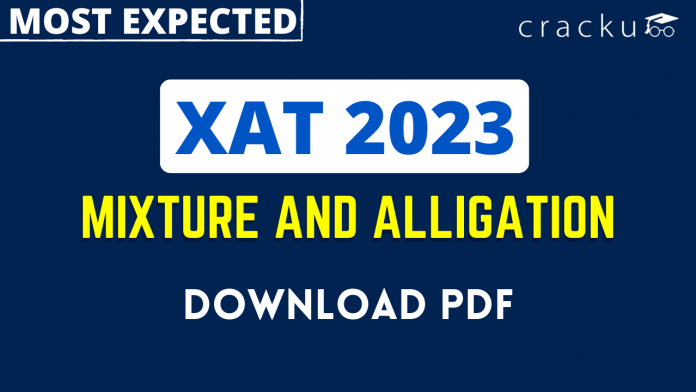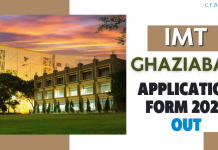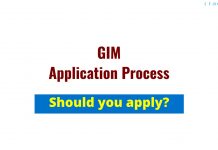Mixture and Alligation Questions for XAT
Download Mixture and Alligation Questions for XAT PDF – XAT Mixture and Alligation questions PDF by Cracku. Practice XAT solved Mixture and Alligation Questions paper tests, and these are the practice question to have a firm grasp on the Mixture and Alligation topic in the XAT exam. Top 20 very Important Mixture and Alligation Questions for XAT based on asked questions in previous exam papers. The XAT question papers contain actual questions asked with answers and solutions.
Download Mixture and Alligation Questions for XAT
Enroll to XAT 2023 Mocks & Sectionals
Question 1: A glass contains 500 cc of milk and a cup contains 500 cc of water. From the glass, 150 cc of milk is transferred to the cup and mixed thoroughly. Next, 150 cc of this mixture is transferred from the cup to the glass. Now, the amount of water in the glass and the amount of milk in the cup are in the ratio
a) 1 : 1
b) 10 : 13
c) 3 : 10
d) 10 : 3
1) Answer (A)
Solution:
Initially: a glass 500cc milk and a cup 500cc water
Step 1: 150 cc of milk is transferred to the cup from glass
After step 1: Glass – 350 cc milk, Cup – 150 cc milk and 500 cc water
Step 2: 150 cc of this mixture is transferred from the cup to the glass
After step 2:
Glass – 350 cc milk + 150 cc mixture with milk:water ratio 3:10
Cup – 500 cc mixture with milk:water ratio 3:10
water in glass : milk in cup = $\frac{10}{13}\times150\ :\ \frac{3}{13}\times500=1:1$
The answer is option A.
Question 2: There are two containers of the same volume, first container half-filled with sugar syrup and the second container half-filled with milk. Half the content of the first container is transferred to the second container, and then the half of this mixture is transferred back to the first container. Next, half the content of the first container is transferred back to the second container. Then the ratio of sugar syrup and milk in the second container is
a) 4 : 5
b) 6 : 5
c) 5 : 4
d) 5 : 6
2) Answer (D)
Solution:

Step 1: Half the content of the first container is transferred to the second container
Step 2: Half of the mixture of second container is transferred back to the first container
Step 3: Half the content of the first container is transferred back to the second container
Sugar syrup : Milk in second container = 62.5 : 75 = 5 : 6
The answer is option D.
Question 3: A mixture contains lemon juice and sugar syrup in equal proportion. If a new mixture is created by adding this mixture and sugar syrup in the ratio 1 : 3, then the ratio of lemon juice and sugar syrup in the new mixture is
a) 1 : 4
b) 1 : 5
c) 1 : 6
d) 1 : 7
3) Answer (D)
Solution:
Lemon juice : sugar syrup in the mixture is 1:1, i.e. 50% Lemon juice and 50% sugar syrup.
In sugar syrup, 100% is sugar syrup.
These two are mixed in the ratio 1:3.
Lemon juice = $\ \frac{\ 1\left(50\%\right)}{1+3}$
Sugar syrup = $\ \frac{\ 1\left(50\%\right)+3\left(100\%\right)}{1+3}=\frac{350}{4}$
Required ratio = 50:350 = 1:7
The answer is option D.
Question 4: Ankita buys 4 kg cashews, 14 kg peanuts and 6 kg almonds when the cost of 7 kg cashews is the same as that of 30 kg peanuts or 9 kg almonds. She mixes all the three nuts and marks a price for the mixture in order to make a profit of ₹1752. She sells 4 kg of the mixture at this marked price and the remaining at a 20% discount on the marked price, thus making a total profit of ₹744. Then the amount, in rupees, that she had spent in buying almonds is
a) 1680
b) 1176
c) 2520
d) 1440
4) Answer (A)
Solution:
It is given,
7C = 30P = 9A and Ankita bought 4C, 14P and 6A.
Let 7C = 30P = 9A = 630k
C = 90k, P = 21k, and A = 70k
Cost price of 4C, 14P and 6A = 4(90k)+14(21k)+6(70k) = 1074k
Marked up price = 1074k + 1752
S.P = $\frac{1}{6}\left(1074k+1752\right)+\left(\frac{4}{5}\right)\left(\frac{5}{6}\right)\left(1074k+1752\right)$ = $\frac{5}{6}\left(1074k+1752\right)$
S.P – C.P = profit
$1460-\frac{1074k}{6}=744$
$\frac{1074k}{6}=716$
k = 4
Money spent on buying almonds = 420k = 420*4 = Rs 1680
The answer is option A.
Question 5: If a certain weight of an alloy of silver and copper is mixed with 3 kg of pure silver, the resulting alloy will have 90% silver by weight. If the same weight of the initial alloy is mixed with 2 kg of another alloy which has 90% silver by weight, the resulting alloy will have 84% silver by weight. Then, the weight of the initial alloy, in kg, is
a) 3.5
b) 2.5
c) 3
d) 4
5) Answer (C)
Solution:
Let the alloy contain x Kg silver and y kg copper
Now when mixed with 3Kg Pure silver
we get $\frac{\left(x+3\right)}{x+y+3}=\frac{9}{10}$
we get 10x+30 =9x+9y+27
9y-x=3 (1)
Now as per condition 2
silver in 2nd alloy = 2(0.9) =1.8
so we get$\frac{\left(x+1.8\right)}{x+y+2}=\frac{21}{25}$
we get 21y-4x =3 (2)
solving (1) and (2) we get y= 0.6 and x =2.4
so x+y = 3
Question 6: A person buys tea of three different qualities at ₹ 800, ₹ 500, and ₹ 300 per kg, respectively, and the amounts bought are in the proportion 2 : 3 : 5. She mixes all the tea and sells one-sixth of the mixture at ₹ 700 per kg. The price, in INR per kg, at which she should sell the remaining tea, to make an overall profit of 50%, is
a) 653
b) 688
c) 692
d) 675
6) Answer (B)
Solution:
Considering the three kinds of tea are A, B, and C.
The price of kind A = Rs 800 per kg.
The price of kind B = Rs 500 per kg.
The price of kind C = Rs 300 per kg.
They were mixed in the ratio of 2 : 3: 5.
1/6 of the total mixture is sold for Rs 700 per kg.
Assuming the ratio of mixture to A = 12kg, B = 18kg, C =30 kg.
The total cost price is 800*12+500*18+300*30 = Rs 27600.
Selling 1/6 which is 10kg for Rs 700/kg the revenue earned is Rs 7000.
In order to have an overall profit of 50 percent on Rs 27600.
Thes selling price of the 60 kg is Rs 27600*1.5 = Rs 41400.
Hence he must sell the remaining 50 kg mixture for Rs 41400 – Rs 7000 = 34400.
Hence the price per kg is Rs 34400/50 = Rs 688
Question 7: Two alcohol solutions, A and B, are mixed in the proportion 1:3 by volume. The volume of the mixture is then doubled by adding solution A such that the resulting mixture has 72% alcohol. If solution A has 60% alcohol, then the percentage of alcohol in solution B is
a) 90%
b) 94%
c) 92%
d) 89%
7) Answer (C)
Solution:
Initially let’s consider A and B as one component
The volume of the mixture is doubled by adding A(60% alcohol) i.e they are mixed in 1:1 ratio and the resultant mixture has 72% alcohol.
Let the percentage of alcohol in component 1 be ‘x’.
Using allegations , $\frac{\left(72-60\right)}{x-72}=\frac{1}{1}$ => x= 84
Percentage of alcohol in A = 60% => Let’s percentage of alcohol in B = x%
The resultant mixture has 84% alcohol. ratio = 1:3
Using allegations , $\frac{\left(x-84\right)}{84-60}=\frac{1}{3}$
=> x= 92%
Question 8: An alloy is prepared by mixing three metals A, B and C in the proportion 3 : 4 : 7 by volume. Weights of the same volume of the metals A. B and C are in the ratio 5 : 2 : 6. In 130 kg of the alloy, the weight, in kg. of the metal C is
a) 48
b) 84
c) 70
d) 96
8) Answer (B)
Solution:
Let the volume of Metals A,B,C we 3x, 4x, 7x
Ratio weights of given volume be 5y,2y,6y
.’. 15xy+8xy+42xy=130 => 65xy=130 => xy=2.
.’.`The weight, in kg. of the metal C is 42xy=84.
Question 9: Imagine you have two large pitchers, A and B. A contains 10 litres of wine and B contains 10 litres of water. One litre of water is removed from B and poured into A. The liquid is mixed very well. Then one litre of the mixture from A is poured into B. Which of the following statements is true?
a) The water contents in A is more than the wine contents in B
b) The water contents in A is less than the wine contents in B
c) The water contents in A is same as the wine contents in B
d) None of these
9) Answer (C)
Solution:
Initially, A has 10 L wine and B has 10L water
Process 1 : When 1 L of water is poured from B to A
A now has 11L ( 10 L wine and 1L water) and B has 9L water
Process 2: 1L from A is put into B
1L of liquid from A will have the composition of 10/11L Wine and 1/11L Water
Composition of A(10L) = $\frac{100}{11}$ L wine and $\frac{10}{11}$ L water
Composition of B(10L) = $\frac{10}{11}$ L wine and $\frac{100}{11}$ L water
Question 10: Milk and water in two vessels A and B are in the ratio 4 : 3 and 2 : 3 respectively. In what ratio the liquids in both the plate vessels should be mixed to obtain a new mixture in vessel C, only five maintaining half milk and half water?
a) 1:1
b) 7:5
c) 2:4
d) 1:3
10) Answer (B)
Solution:
The fraction of milk in A = 4/(4+3) = 4/7
The fraction of milk in B = 2/(2+3) = 2/5
Let them be mixed in the ratio x:y such that their fraction is 1/2
It can be written as
$\frac{4x}{7}$ + $\frac{2y}{5}$ = $\frac{x+y}{2}$
Upon solving,
$\frac{4x}{7}$ – $\frac{x}{2}$ = $\frac{y}{2}$ – $\frac{2y}{5}$
$\frac{x}{14}$ = $\frac{y}{10}$
$\frac{x}{y}$ = $\frac{7}{5}$
Required ratio is 7:5





